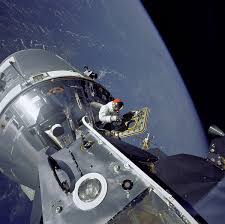Apollo 9: A Crucial Step Towards the Moon
Apollo 9, an often overlooked mission in the Apollo program, played a pivotal role in NASA's quest to land humans on the moon. Launched on March 3, 1969, Apollo 9 was the third manned mission of the Apollo program and marked a significant milestone in testing the command and lunar modules in Earth's orbit. This article delves into the objectives, achievements, and legacy of Apollo 9, highlighting its crucial contributions to the success of the Apollo program.
Mission Objectives:
The primary goal of Apollo 9 was to test the lunar module (LM) in a space environment. The mission aimed to validate the functionality of the LM in space and to simulate the docking and undocking procedures critical for future lunar landings. Another important objective was to test the crew's ability to perform extravehicular activities (EVAs) or spacewalks.
The Crew:
Apollo 9 had a three-member crew, each contributing their unique expertise to the mission's success. James McDivitt served as the mission commander, David Scott as the command module pilot, and Rusty Schweickart as the lunar module pilot. Their experience and skills were vital in executing the complex tasks assigned to them.
Key Achievements:
Apollo 9 achieved several milestones during its 10-day mission in Earth's orbit. The mission successfully tested the LM in space for the first time. The crew performed critical tests such as separation and docking maneuvers between the command and lunar modules, demonstrating the viability of these procedures for lunar missions. These tests paved the way for subsequent missions to land humans on the moon.
Furthermore, Apollo 9 included the first-ever manned spacewalk, carried out by Rusty Schweickart. He donned a spacesuit and ventured outside the command module, practicing tasks that would be crucial for future moonwalkers. Schweickart's spacewalk showcased the feasibility of performing EVAs and highlighted the challenges astronauts would face in the harsh vacuum of space.
Legacy and Impact:
Apollo 9's success was a crucial stepping stone towards the historic moon landing of Apollo 11. The mission provided invaluable data on the performance and reliability of the LM, enabling engineers to fine-tune its design and functionality for future lunar missions. The extensive testing of docking and undocking procedures, as well as the EVA experience gained, contributed to the overall safety and success of subsequent Apollo missions.
Beyond its immediate impact on the Apollo program, Apollo 9 also laid the groundwork for future space exploration endeavors. The mission's accomplishments reinforced NASA's confidence in the spacecraft systems and procedures, allowing them to plan subsequent missions with greater assurance.
While often overshadowed by the more famous Apollo 11 moon landing, Apollo 9 played an indispensable role in preparing NASA for lunar missions. The successful testing of the lunar module in space, docking and undocking maneuvers, and the groundbreaking spacewalk set the stage for the unprecedented achievement of landing humans on the moon. Apollo 9's achievements and legacy continue to remind us of the remarkable engineering, courage, and dedication required to explore the vastness of space.

Comments
Post a Comment